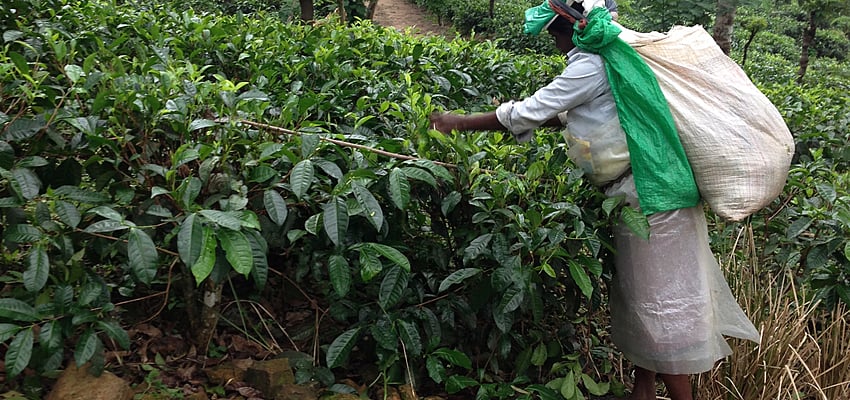


Tea was imported by the English in the 19th century and nowadays occupies a central place in local life. More than 1 million people work in the country's plantations or tea factories A trip to Sri Lanka has to be synonymous with discovering how tea is grown. Simply because it is everywhere, in the towns, the country, or the mountains.
Without Hemileia vastatrix, the fungus which decimated coffee plantations in the 1870s, tea would probably never have made an appearance in Sri Lanka, and the country would not have had the same destiny. The development of tea culture on this island is down to Sir Thomas Lipton. At the time he realised that Sri Lanka's mountains had ideal growing conditions for tea bushes. In less than 20 years, the central mountains were cleared and tea plantations developed from Kandy to Haputale. Kandy became the main trading post for manufactured tea. Large numbers of roads were constructed and a railway line built across the mountains to ensure the train could take what had been produced to Colombo.
The Sri Lankans quickly adopted this beverage which can be drunk at any time during the day. Nowadays it's unthinkable to welcome someone into your house without offering them a cup of tea. It's generally made very strong and with a mixture of spices. Then it is mixed with milk and served with a lot of sugar.
For workmen, tea is part of their end of day ritual. When they aren't drinking it at home or at work, Sri Lankans often go to thai kadai, little stalls which only serve tea, occasionally accompanied by snacks to eat there or take away.
Most of the tea workers are Tamils, descendants of workers brought from Southern India in the 19th century. Only women pick, a demanding and thankless task that is carried out under difficult conditions. The pickers are piece workers, paid approximately 70p for 15 kgs of picked leaves. Which works out at less than £22 per month.
The workers and their families live in villages built right next to the plantations. Everything is there - school, place of worship, shops - so that the workers are always there and available.

Ceylon tea has different names according to the altitude at which it is grown and also according to the region where it is grown. The most famous areas are: Nuwara Eliya, Dambulla, Uva and Kandy. There is black, green and white tea. There are three different altitudes which produce teas that have different qualities and flavours.